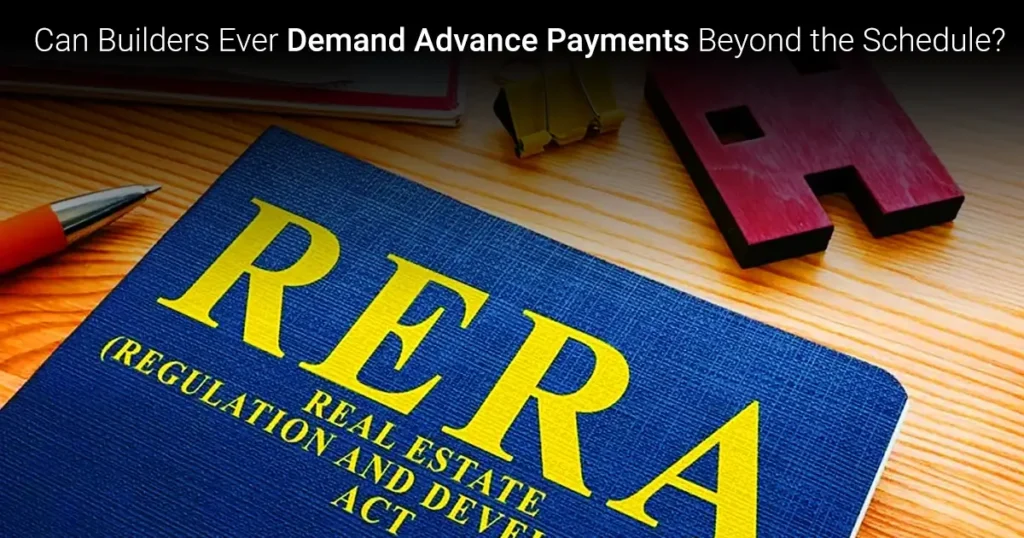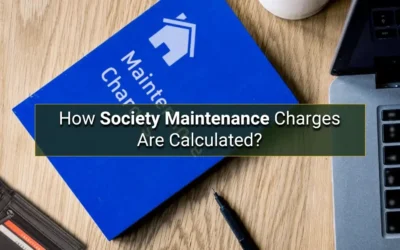Before 2016, the Indian realty market was infamous for its murky waters. Payment plans differed from project to project, and buyers found themselves at the mercy of unpredictable and at times arbitrary demands of builders. Fast forward to the present, and we see a transformation led by regulations, transparency, and enforcement. The most action-worthy in the lead into the future is that provided by RERA.
One more outstanding requirement of RERA is that it puts into place a payment plan that is construction-friendly. This scheme ties payments directly to the project’s progress on-site. Not just a monetary arrangement, it is also an enforceable timeline by law to return the power to buyers.
But how does it work? What is inside? And more importantly, how can buyers use it to their advantage? Let’s find out in detail.
What is a RERA Payment Schedule?
A RERA payment schedule is a plan of stage-wise payments prescribed by the respective state RERA authority for the concerned under-construction real estate project. It states the repayment of the amounts for home buyers. Simply put, it states how much and when a home buyer needs to make the payment, which would be under the progress of the construction process.
A Construction-Linked Payment Schedule states that the payment is done as per RERA, that is, the amount is released by the buyer in proportion to the amount of work completed rather than a lump sum payment. Such a staggered release of payment is, however, generally tied to the physical milestones achieved at the site.
What is the Importance of the RERA Payment Schedule for Homebuyers?
RERA payment schedule cannot be overemphasized in importance to homebuyers. Here are some reasons:
Clarity in Financial Transactions
Developers are bound by RERA to adhere to a certain payment schedule that protects buyers from arbitrary or unreasonable demands for payment.
Avoids Penalties due to Delays
Payments are linked to construction milestones so that builders have some incentive to stay on schedule. Buyers need not spend before the milestone promised to them is achieved.
Legal Protection
The schedule forms part of the sale agreement and hence can be enforced legally. In the event of any dispute or delay, buyers can now approach the state RERA authority to get their grievances redressed.
Lessening the Financial Load
It will help the buyer to plan funds better, rather than paying a huge amount upfront. This is a big positive in buying property via a home loan, as it allows one to disburse the payment over time.
Also Read: How can I check the RERA Approved projects in Bangalore?
Construction-Linked Payment Schedule (As per RERA)
State-level RERA authorities may vary this, but a general construction-linked payment schedule under RERA is structured along the following lines:
| Stage of Construction | Percentage of Payment Due |
| Booking Amount | 10% of the total cost |
| Excavation | 10% |
| Plinth Completion | 10% |
| First Floor Slab | 10% |
| Roof Slab Completion | 10% |
| Brickwork Completion | 10% |
| Internal Plastering | 10% |
| Flooring | 10% |
| Finishing & Fixtures | 10% |
| Possession | 10% |
This schedule may slightly vary across states or specific projects, but the underlying principle remains the same: payment is made in stages, only after the respective construction work is completed.
Can Builders Ever Demand Advance Payments Beyond the Schedule?

No, not legally.
According to the RERA directions, there shall be no request by the developers of the land beyond 10 percent of the property valuation towards a booking amount until such a time that a sale agreement is signed. In addition to this, any subsequent payments should be according to the construction-linked schedule approved by RERA to the letter.
If builders demand advance payments outside the approved schedule, it is a clear violation of the RERA provisions. In such cases, buyers can raise a complaint with the State RERA authority.
Can Full EMI Be Paid for an Under-Construction Property?
It is one of the most common questions for first-time homebuyers:
“Will we be able to give full EMI of an under-construction property?”
It all depends on the form of your loan.
Pre-EMI Plan:
You only pay the interest on the amount of the loan dispensed.
The main repayment starts on full disbursal or on possession.
Most buyers like to choose this option for under-construction projects.
Full EMI Plan:
Some banks allow or mandate full EMI (interest + principal) even during construction.
This can create a financial strain, especially if you are also paying rent.
In RERA-compliant projects, banks usually disburse the loan amount in tranches, following the RERA payment schedule for under-construction flats. So, generally speaking, full EMI payment would not apply unless the buyer decides to do so willingly.
What is the Payment Method for Construction?
Under RERA, the payment method for construction followed by buyers in approved projects is linked to the stage of construction. They can pay through:
- Bank transfers (NEFT/RTGS)
- Disbursements under home loans (linked to project milestones)
- Non-Dated Cheques (less common)
- Online portals (many smart cities and developer platforms)
Each installment will only be due after the construction stage has been certified by an engineer, architect, or chartered accountant, thus ensuring credibility and verification.
State-Wise Variation in RERA Payment Guidelines
Although RERA is the central law, it is implemented state-wise, and therefore, the payment schedule under RERA is expected to slightly differ across various states. Some points of note include:
Maharashtra (MahaRERA)
Regulation and transparency at its highest.
Builders must upload updates on the projects and progress on payment milestones quite regularly.
Karnataka (RERA Karnataka)
Lineakes’ construction milestone adherence is strict.
Any deviation will have legal consequences.
Uttar Pradesh (UP RERA)
More clear provisions towards buyer-centric.
Track your construction online via the RERA portal.
Tamil Nadu (TNRERA)
Offers stage-wise payment tracking in detail on official websites.
Any payment demand outside this approved schedule will be regarded as an offence.
These are the advisable measures for homebuyers when it comes to consulting the official RERA portal of the state before signing agreement forms or making payments.
What Happens If a Builder Does Not Follow the RERA Payment Schedule?
Where a developer fails to adhere to the Construction Linked Payment Schedule (as prescribed above in RERA) or demands above the stipulated amounts, affected buyers can:
Complain to the State RERA Authority.
Demand penalties or compensation.
Claim either a refund or interest for delays.
The builder will then be subjected to:
- Monetary penalties
- Suspended project registration
- Criminal proceeding
Thus, RERA has put buyers in a much stronger position in legal and financial terms to safeguard their investment
Concluding Remarks
Moving on from a past of uncertainty and disjointed financial practices in real estate, the RERA Payment Schedule has emerged as a much-needed system of restoring order, accountability, and trust. It anchors payments to the actual progress of the construction, thereby shielding buyers against monetary exposure far before time, while simultaneously compelling developers to act as per law-defined milestones.
For homebuyers, especially those buying under-construction properties, having an in-depth understanding of this schedule is not just a good idea but an absolute necessity. It aims at facilitating a fair and transparent payment system, bestows buyers with various legal rights should any non-compliance arise, etc.
With the Indian property market on the path of professionalism and regulation, the RERA payment schedule stands as a living monument to how beneficial legislation can be for market imbalances. So buyers, experienced investors, and legal advisors alike must first gear themselves to this framework to engage in a connoisseurly, safe, and conscientious form of property ownership.




